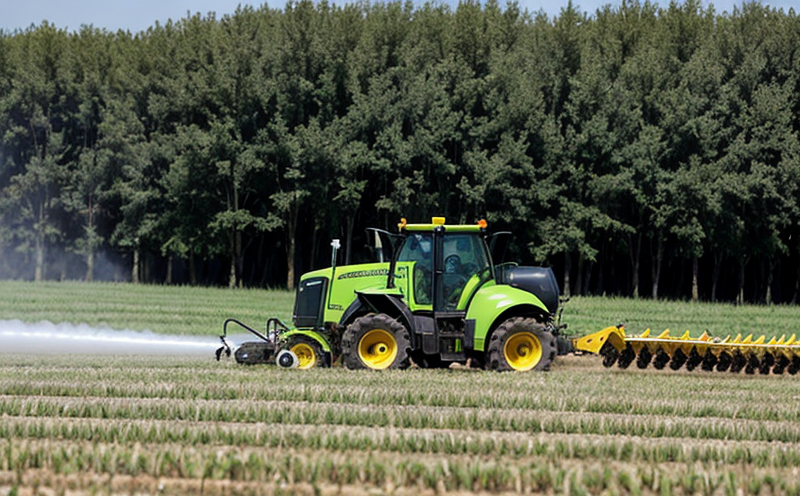Pendimethalin Residue Testing in Crops Validation Method Development Test
The demand for food safety and quality has never been higher. Ensuring that crops are free from harmful residues is a critical aspect of maintaining public health. One such residue, Pendimethalin—a widely used herbicide—must be rigorously tested to ensure compliance with international standards.
Pendimethalin belongs to the phenylamide class of herbicides and is primarily used in agriculture for pre-emergence weed control. Its widespread use makes it essential to develop accurate testing methods that can detect even trace amounts of residues in crops post-harvest. The aim of this service is not only to provide accurate residue levels but also to validate the method itself, ensuring its reliability and repeatability.
The testing process involves several key steps. Initially, a sample of the crop is collected from the field or storage facility. This sample must be representative and free from contamination. Once collected, it undergoes a meticulous extraction process using solvents that are capable of effectively isolating Pendimethalin residues while minimizing interference.
After extraction, the residue is purified to remove any interfering compounds before being analyzed via Liquid Chromatography-Mass Spectrometry (LC-MS). This advanced analytical technique allows for precise quantification and identification of Pendimethalin. The method development phase involves optimizing parameters such as solvent type, extraction time, sample preparation steps, and LC-MS settings to ensure the most accurate results.
The validation process is crucial in establishing confidence in the testing methodology. It ensures that the test yields consistent and reliable results under various conditions. Validation criteria include accuracy, precision, linearity, limit of detection (LOD), and limit of quantitation (LOQ). These parameters are critical for ensuring the method can detect Pendimethalin residues down to regulatory limits.
International standards such as ISO 17025 guide us in developing and validating this testing procedure. The LOD is typically set at a level that allows for regulatory compliance, often below the threshold of 0.1 ppm. The LOQ ensures that even trace amounts can be accurately quantified for reporting purposes.
The reliability of the test method is further enhanced by performing blank matrix spiked samples and replicates to assess precision and accuracy. This step helps in confirming that the method consistently produces results within acceptable limits, thus ensuring robust validation.
For quality managers and compliance officers, this service provides peace of mind knowing that crops are free from harmful residues. R&D engineers benefit from accurate data that can be used for further refinement of crop management practices. Procurement teams can ensure they source only compliant products, thereby maintaining product integrity throughout the supply chain.
Why It Matters
Testing Pendimethalin residues in crops is not just a regulatory requirement; it’s a crucial step towards ensuring food safety and public health. Regulatory bodies worldwide enforce strict limits on pesticide residues to protect consumers from potential health risks associated with exposure to harmful chemicals.
- Health Risks: Excessive exposure to Pendimethalin can lead to various health issues, including toxicity effects in humans and animals.
- Regulatory Compliance: Failure to comply with these limits can result in severe penalties for non-compliance. This not only affects the producer but also impacts brand reputation and market access.
- Consumer Trust: By ensuring that crops are free from harmful residues, consumers have greater trust in the agricultural sector.
The stakes are high, and the consequences of non-compliance can be severe. This testing service is designed to address these critical issues by providing accurate and reliable data that can be used for decision-making processes within organizations.
Applied Standards
The Pendimethalin residue testing in crops validation method development test adheres to several international standards, ensuring the highest level of accuracy and reliability:
- ISO 17025: This standard provides requirements for competence of testing laboratories. It ensures that the laboratory maintains a high level of quality management systems.
- ASTM E1402: This method covers procedures for quantifying pesticide residues in crops using gas chromatography and mass spectrometry.
- IARC Group 3 Classification: Pendimethalin is classified as a probable human carcinogen, emphasizing the importance of thorough testing.
These standards are integral to our testing process, ensuring that every step is performed according to recognized best practices. By adhering to these guidelines, we guarantee accurate and reliable results.





